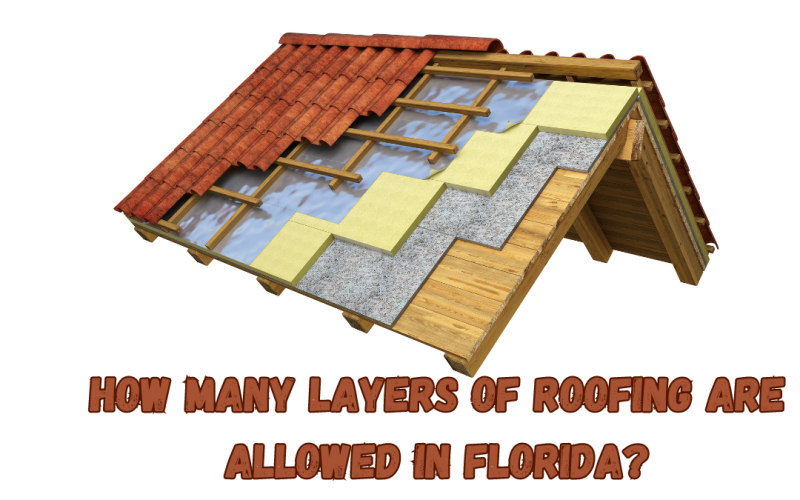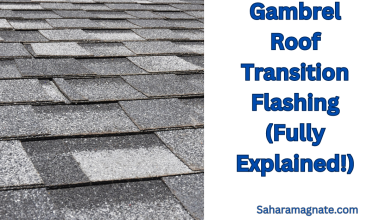Every home in Florida needs an excellent roof to protect it from the unpredictable elements of the Sunshine State.
But when it comes to roofing, there’s more to consider than choosing a quality material.
Florida-specific regulations have increasingly taken shape over time, making it essential to stay informed about home maintenance.
One of the most common questions that Florida homeowners have revolves around how many layers of roofing are allowed by local regulations.
Luckily, you don’t need a degree in roofing law to understand what’s permissible in your area!
In this article, we’ll provide you with everything you need to know about the number of layers allowed for roofing in Florida– and why these limits exist.
How Many Layers of Roofing Are Allowed in Florida?
When it comes to roofs and roofing systems, Florida homeowners have a lot to consider. One of the main questions they might have is: How many roofing layers are allowed?
The answer to this depends on the type of roof that you have. Florida Building Code generally allows two layers of asphalt shingle roofs if they’re both in good condition, but not more than three.
On the other hand, metal, wood shake, and tile roofs can generally only have one layer.
If your roof already has three layers, it’s important to remember that installing more will not only void your warranty; but it could also pose a hazard in the event of extreme weather.
The extra weight and build-up can cause a weak spot on your roof and increase the chances of water leakage.
The three-layer rule applies to residential and commercial roofs in Florida, so if you plan to re-roof your home or office building, stick to the maximum number of layers allowed.
You should also note that Florida has some exceptions to the three-layer rule depending on the type and condition of your current roof layer(s).
Suppose you’re unsure about what rules apply in your situation. In that case, it’s best to consult an expert roofer before deciding how many layers are reasonable for your particular situation.
If you’re looking to install a new roof over an existing one and both are in good condition, a third layer can be added to asphalt shingle roofs as long as it meets all other building codes.
However, it’s important to note that many states require the removal of all existing layers before a new one is installed for proper installation.
So always check with your local building department for details on your situation.
Overview of the Florida Building Code
Regarding the number of roofing layers allowed in Florida, the answer is not as simple as you may think.
The number of layers allowed depends on the type of roof and what local codes may be in effect. Generally, though, most areas allow three or four layers of roofing.
The rules for how many layers are permissible in Florida are found in the Florida Building Code, updated every three years.
This code sets standards for constructing and maintaining buildings, structures, and other related components like roofing. It also provides information on approved materials and installation methods.
For instance, the code stipulates that a qualified contractor must install each roofing layer with proper fasteners and flashing details per manufacturer instructions.
In addition, each layer must be free from defects such as cracking, blistering, or deterioration (including age).
Finally, if more than two layers of shingle types exist on a single residential building, it must meet specific requirements outlined in several sections of the code.
Factors That Determine the Number of Roofing Layers Allowed in Florida
When building a roof in Florida, you’ll need to figure out how many layers are allowed.
Well, it all depends on the kind of roofing materials you want to use: whether it’s asphalt shingles or tile.
Asphalt Shingles
If you’re going for asphalt shingles, the State of Florida has a two-layer limit. So, if your base layer is already asphalt shingles and wants to replace them with another layer of asphalt shingles, that’s not allowed in Florida.
You’ll have to remove the existing shingle layer or use a different material altogether.
Tile
When it comes to tile roofs, there’s no limit on how many layers you can have—you can lay down multiple layers of tile as long as the tiles are still thick and intact.
However, remember that most building codes don’t recommend more than three layers of tiles.
But no matter how many layers you decide on, ensure they’re firmly embedded and secured adequately with mortar or adhesive so they won’t come loose over time.
Costs Associated With Re-Roofing in Florida
When it comes to re-roofing in Florida, there are a few important facts to bear in mind. Let’s take a look at the costs associated with this process.
First of all, the number of layers allowed on a roof in Florida depends on your roof type. Generally speaking, roofs made from asphalt shingles and wood shingles can have a maximum of two layers, whereas tile and metal roofs can only have one layer.
Trying to exceed these limits is generally not recommended as it will increase the weight load on your roof, putting it at risk of collapsing or becoming structurally unstable.
Another cost factor you need to consider when re-roofing in Florida is hiring a licensed contractor familiar with local building codes and regulations.
Expect to pay anywhere from $3-5 per square foot for installing new materials and around $2 per square foot for additional layers (if allowed).
There may also be other costs related to disposal fees, permits, and labor that could drive up the price significantly.
Finally, when getting an estimate for re-roofing in Florida, be sure to get everything in writing so that you have all details accounted for should there be any unexpected expenses.
This will also give you peace of mind that no corners regarding quality or safety standards are being cut.
Benefits and Drawbacks of Multiple Roofing Layers
You may have heard that installing multiple roofing layers can save you money, but is it allowed in Florida?
Well, let’s look at the benefits and drawbacks of installing multiple roofing layers in the Sunshine State.
Benefits
The most obvious benefit of installing multiple layers of roofing is cost savings. You will not have to purchase new materials to replace your roof because you can add an additional layer on top.
Additionally, installing multiple layers of roofing can be much faster than starting from scratch.
Drawbacks
The major drawback of adding multiple layers of roofing is that the extra weight could cause problems with your structure’s load-bearing capacity.
This additional weight could lead to more wear and tear on other areas of your home, such as the foundation and rafters.
Additionally, water and moisture accumulation can become a problem due to the lack of ventilation when multiple layers are installed. This can lead to decay and mold growth which is difficult and costly to remove.
The bottom line is that while there are benefits associated with installing multiple layers of roofing, it is crucial to consider potential drawbacks before making this decision for your Florida home.
You should consult with a professional contractor before making any major changes to your home’s roofing system.
Conclusion
The number of roofing layers allowed in Florida is determined by the roof’s condition, local building codes, the roof’s age, and the type of shingles used for the roofing.
Proper maintenance and inspections can increase the number of roofing layers. Still, the number should remain under three at all times to ensure the safety and integrity of the building.
Ultimately, the best course of action is to speak to a local roofing contractor familiar with the building codes in your area to find out what is and isn’t allowed in terms of maintaining your roof.
An expert opinion is the best way to ensure your roof is up to code and will offer the best protection.






